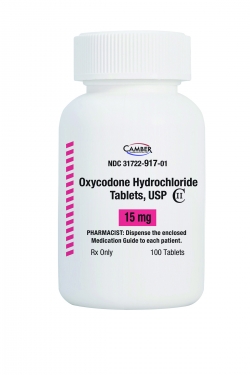Exploring the Various Medical Uses and Effects of Oxycodone hurting Administration
Oxycodone, a powerful opioid analgesic, has actually long been a keystone in the monitoring of modest to extreme discomfort. Its efficiency in alleviating various kinds of pain has made it a vital tool for medical care providers. However, the complexities bordering its clinical usages and results exceed mere discomfort alleviation. Recognizing the complex interplay in between oxycodone, the body, and the possible effects of its management is critical for both medical care experts and clients alike. Let's unwind the complex landscape of oxycodone suffering administration to gain a comprehensive understanding into its utility and influence.

Discomfort Alleviation Mechanism of Oxycodone
Oxycodone exerts its analgesic results largely through its actions on the central nerves, particularly by binding to opioid receptors in the mind and spine. By binding to these receptors, oxycodone alters the perception of discomfort, leading to a reduction in pain sensation. Buy Oxycodone online. The medication functions as an agonist, triggering kappa, mu, and delta opioid receptors, which are distributed throughout the central anxious system. This activation prevents the release of neurotransmitters associated with pain signaling, such as substance P and glutamate, while likewise advertising the launch of repressive natural chemicals like gamma-aminobutyric acid (GABA)
In addition, oxycodone not only modulates pain perception yet also impacts psychological reactions to pain. The medication can induce feelings of euphoria and leisure, adding to its high capacity for abuse. Recognizing the specific system of oxycodone's action on the main anxious system is important for doctor to optimize its usage suffering management while minimizing the risks linked with its capacity for dependency and abuse.
Sorts Of Discomfort Conditions Dealt With
In the realm of discomfort administration, various kinds of pain problems benefit from the targeted analgesic effects of medicines such as oxycodone. Oxycodone is typically prescribed for the therapy of moderate to serious pain, making it a beneficial tool in taking care of sharp pain complying with surgical procedures, injuries, or medical treatments. In addition, oxycodone is used in persistent discomfort conditions such as cancer-related discomfort, neuropathic pain, and musculoskeletal discomfort problems like osteo arthritis or fibromyalgia.
Additionally, oxycodone works in handling innovation pain episodes in people already on around-the-clock opioid treatment. Breakthrough pain describes sudden, extreme flares of discomfort that occur in spite of recurring pain administration. By offering quick pain relief, oxycodone aids improve the high quality of life for people dealing with conditions like cancer cells, where pain control is critical for general well-being.
In palliative care settings, oxycodone plays a crucial duty in guaranteeing comfort and self-respect for terminally unwell people experiencing severe pain. Its potency and versatility in application make it a beneficial alternative for tailoring pain management to individual patient needs across a spectrum of pain problems.
Prospective Negative Effects and Threats
Typically observed in people utilizing drugs for pain monitoring, prospective side effects and threats associated with these therapies require cautious consideration and tracking by healthcare suppliers. Oxycodone, a potent opioid frequently prescribed for moderate to extreme pain, can lead to numerous side effects.
Additionally, the long-term use oxycodone can lead to tolerance, where greater doses are needed to attain the exact same degree of pain alleviation. This can potentially raise the risk of overdose and dependency - Buy Oxycodone online. Clients with a background of substance misuse or psychological health conditions are at a higher threat of experiencing these unfavorable results
Healthcare companies must thoroughly examine the dangers and benefits of oxycodone therapy for every private client and check them carefully to reduce prospective side impacts and dangers connected with its usage.
Dosage Guidelines and Administration
Provided the prospective negative effects and dangers related to opioid medications like oxycodone, healthcare service providers should establish clear dosage standards and correct management procedures to make sure risk-free and efficient pain monitoring for people. The dose of oxycodone ought to be individualized based upon variables such as the person's age, weight, case history, and the seriousness of pain. Typically, the first dosage for opioid-naïve clients is 5-15 mg every 4 to 6 hours as needed for discomfort. It is critical to begin with the most affordable efficient dose and titrate gradually to achieve adequate discomfort alleviation while reducing side results.
Health care providers ought to on a regular basis reassess the person's pain levels and change the dosage as necessary. Oxycodone is commonly available in immediate-release and extended-release formulations, and the application routines differ in between the two.

Individual Education And Learning and Tracking
Patients suggested oxycodone for discomfort management need to get comprehensive education and learning on appropriate drug use and must go through regular surveillance to guarantee secure and efficient browse this site treatment results. Patient education and learning plays an important duty in the risk-free usage of oxycodone, as it empowers people to understand the drug's potential advantages, risks, and side impacts. Medical care service providers should educate individuals on the importance of taking oxycodone precisely as suggested, avoiding alcohol and various other main nervous system downers, and identifying signs of opioid overdose. Furthermore, people ought to be educated about proper storage of the drug to prevent misuse or unexpected intake by others.
Normal surveillance is necessary to assess the client's reaction to oxycodone therapy, identify any type of emerging side impacts or issues, and examine the requirement for dose modifications. This monitoring may include frequent follow-up appointments, pee medicine testings to keep an eye on adherence and find possible abuse, and routine evaluations of the therapy plan to guarantee optimal discomfort monitoring end results while decreasing the threat of opioid-related see this here damage. By offering comprehensive education and carrying out regular monitoring protocols, medical care carriers can advertise the efficient and safe use oxycodone hurting administration.
Final Thought
To conclude, oxycodone is a potent opioid medicine generally used suffering monitoring for different problems. Its system of action entails binding to opioid receptors in the brain and back cord to alleviate discomfort. While effective in giving pain alleviation, oxycodone is associated with possible negative effects and threats, necessitating mindful dosage standards, management, client education and learning, and keeping an eye on to guarantee efficient and secure use in clinical method.
In the realm of discomfort monitoring, various types of pain problems benefit from the targeted analgesic impacts of drugs such as oxycodone. Oxycodone is generally recommended for the therapy of modest to severe pain, making it an important device in taking care of acute pain adhering to surgeries, injuries, or medical treatments. In addition, oxycodone is utilized in chronic discomfort conditions such as cancer-related discomfort, neuropathic discomfort, and musculoskeletal pain conditions anchor like osteo arthritis or fibromyalgia.
Breakthrough pain refers to sudden, intense flares of discomfort that happen regardless of recurring pain management. By offering fast discomfort relief, oxycodone helps improve the high quality of life for individuals experiencing from conditions like cancer, where pain control is vital for total health.